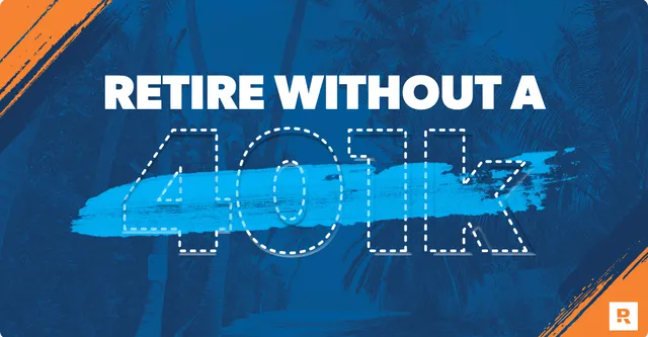Retirement Planning for Entrepreneurs (Without a 401k)
When you’re an employee, saving for retirement is often straightforward: you contribute to a 401(k) or similar employer-sponsored plan, maybe get a company match, and let it grow over time. But for entrepreneurs and business owners, retirement planning can be trickier. Without the traditional 401(k) safety net, you need to take control of your future financial security.
The good news? You have plenty of options. With the right strategy, you can build a retirement plan that’s just as strong if not stronger than traditional paths.
Why Retirement Planning Is Different for Entrepreneurs
Entrepreneurs often face unique challenges:
-
Irregular income: Cash flow can fluctuate, making consistent saving difficult.
-
No employer contributions: You’re both the employee and the boss, so the responsibility falls entirely on you.
-
Business-first mindset: Many entrepreneurs reinvest profits into the business and forget about personal savings.
But here’s the truth: your business may not always be your retirement plan. Markets shift, industries change, and relying solely on selling your business someday can be risky.
Smart Retirement Options for Entrepreneurs
1. SEP IRA (Simplified Employee Pension)
A SEP IRA is a flexible option that lets you contribute a percentage of your income, up to 25% of compensation or $66,000 (2023 limit).
-
Pros: High contribution limits, tax-deductible.
-
Cons: Contributions must be made for employees if you have them.
2. Solo 401(k)
Designed for self-employed individuals with no employees (other than a spouse), a Solo 401(k) allows contributions as both employer and employee.
-
Pros: Very high contribution limits, Roth option available.
-
Cons: More paperwork than an IRA, not suitable if you have employees.
3. Traditional or Roth IRA
Individual Retirement Accounts are the simplest entry point. You can contribute up to $6,500 per year ($7,500 if 50+).
-
Pros: Easy to set up, Roth IRA grows tax-free.
-
Cons: Lower contribution limits compared to other plans.
4. Taxable Investment Accounts
If you’ve maxed out retirement accounts or want flexibility, you can invest in stocks, ETFs, bonds, or real estate through a brokerage account.
-
Pros: No contribution limits, full liquidity.
-
Cons: No tax benefits, subject to capital gains tax.
5. Real Estate Investing
Rental properties can double as both an income stream and a long-term retirement asset.
-
Pros: Cash flow, potential property appreciation.
-
Cons: Requires management, not always “hands-off.”
6. Build a Business Exit Strategy
If your goal is to eventually sell your business, plan ahead. Create systems and structures that make it valuable even without you running it.
-
Pros: Potential for a large payout.
-
Cons: Risky—market conditions and buyer demand matter.
Practical Tips to Stay on Track
-
Pay Yourself First – Set up automatic transfers into retirement accounts, even if it’s a small percentage of income.
-
Diversify Beyond Your Business – Don’t put all your wealth into one basket. Spread it across investments.
-
Think Long-Term Taxes – A mix of tax-deferred (SEP IRA, Traditional IRA) and tax-free (Roth IRA) accounts gives you flexibility in retirement.
-
Work with a Financial Advisor – Especially one who specializes in entrepreneurs. They can help create a customized plan.
-
Revisit Annually – As your business grows, adjust contributions and strategies.
Final Thoughts
Retirement planning without a 401(k) might feel daunting, but as an entrepreneur, you actually have more control and flexibility. By leveraging the right retirement accounts, diversifying investments, and planning ahead, you can build lasting financial security—without relying on someone else’s plan.
The key is to start now, even with small contributions. Your future self will thank you.


